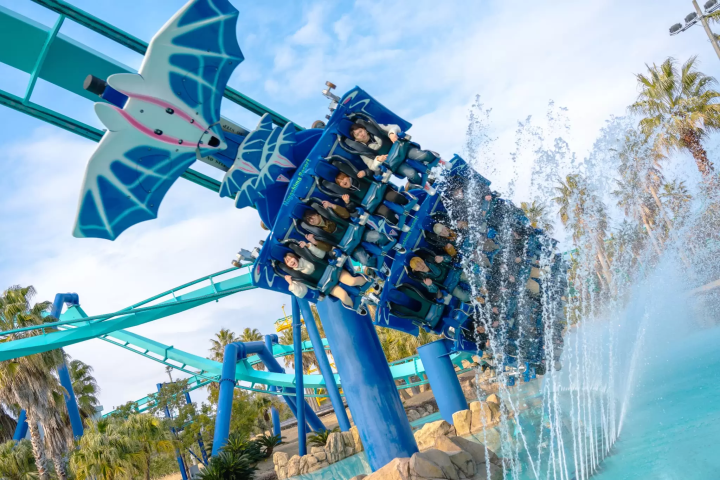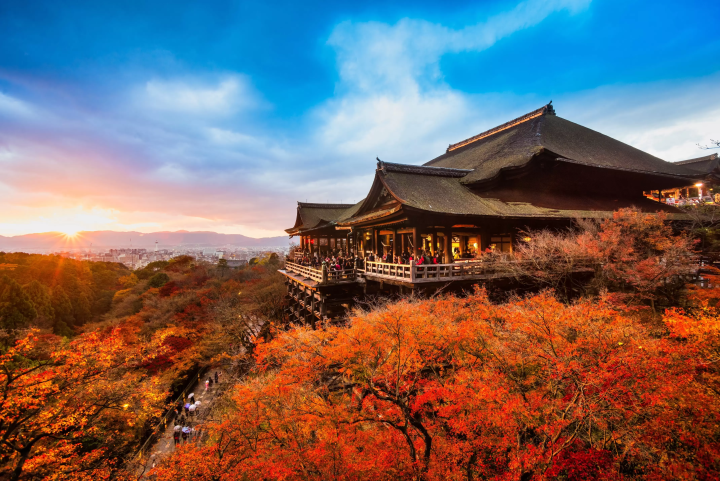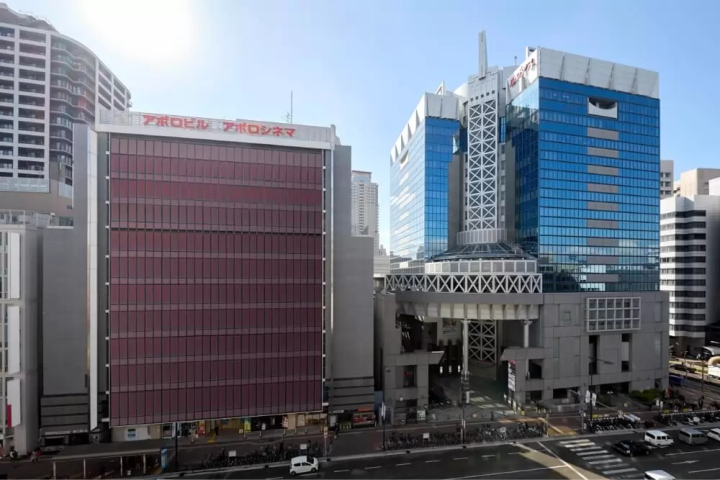[Shimanto City, Kochi Prefecture] Introduction to Shimanto festivals
![[Shimanto City, Kochi Prefecture] Introduction to Shimanto festivals](https://resources.matcha-jp.com/resize/720x2000/2024/03/29-175601.webp)
We would like to introduce you to the local festivals that have been held in Shimanto City since ancient times.
-
Table of Contents
- 1. Nakamura area
- 1-1 Tosa Ichijo Courtier Procession (Wisteria Festival)
- 1-2 Shimanto Citizens Festival
- 1-3 All Japan Prostitute Spider Sumo Tournament
- 1-4 Daimoji bonfire
- 1-5 Shimanto Summer Fireworks Festival
- 1-6 Fuwa Hachiman Shrine Grand Festival
- 1-7 Ichijo Festival
- 2. West Tosa Region
- 2-1 Iwama Boat Trip
- 2-2 Gonya's Nembutsu Dance
- 2-3 Tachibana Mikoshi Boat Crossing
- 2-4 Hanke Autumn Festival
- 2-5 Five Deer Dance
1. Nakamura area
The Nakamura area, where Ichijo Norifusa came from Kyoto about 550 years ago, is home to many historical sites, including townscapes and place names that imitate Kyoto.
Many festivals are held in the Nakamura area, including one associated with Lord Tosa Ichijo.
1-1 Tosa Ichijo Courtier Procession (Wisteria Festival)
The festival recreates the events that took place when Ichijo Norifusa, who built the foundations of Shimanto City, left Kyoto in 1468 and took up residence at the Nakamura Imperial Palace in order to recover his Hata Manor.
Modeled after the aristocratic procession of the Aoi Festival in Kyoto, a total of 200 participants dressed in costumes from the Muromachi period parade through the city. The colorful costumes, which correspond to each person's position, are reminiscent of a period picture scroll.
![[Shimanto City, Kochi Prefecture] Introduction to Shimanto festivals](https://resources.matcha-jp.com/resize/720x2000/2024/03/29-175603.webp)
1-2 Shimanto Citizens Festival
This event heralds the arrival of summer in Little Kyoto Nakamura, and is a festival where citizens can participate, with events such as the Nakamura Dance Parade and the Lantern Parade, centered around the "Shimanto Citizens' Festival Executive Committee," which is made up of volunteers from the city. In particular, the heroic performance of lit-up lanterns parading through the city streets is worth seeing, with each participating group putting their own unique touches on the event.
![[Shimanto City, Kochi Prefecture] Introduction to Shimanto festivals](https://resources.matcha-jp.com/resize/720x2000/2024/03/29-175608.webp)
1-3 All Japan Prostitute Spider Sumo Tournament
It has long been a popular summer holiday activity for children, and is held every year on the first Saturday of August within the grounds of Ichijo Shrine, which is located on a hill in the city center, as a way for children to create summer memories.
This traditional event remains only in Nakamura, Shimanto City, and Kajiki Town, Kagoshima Prefecture in the whole country.
![[Shimanto City, Kochi Prefecture] Introduction to Shimanto festivals](https://resources.matcha-jp.com/resize/720x2000/2024/03/29-175612.webp)
1-4 Daimoji bonfire
The Daimonji Okuribi is a Bon festival event in the Masaki district of Shimanto City that marks the end of summer in the Little Kyoto of Nakamura. On July 16th of the lunar calendar, a bonfire is dug into the grass and trees halfway up Judaijiyama (known locally as Dainojiyama), where the mountain god is worshiped. Torches collected from each household in the area are placed inside the bonfire and a bonfire is set.
The story goes that about 500 years ago, Ichijo Norifusa's son, Fusaka, who fled to Nakamura to escape the Onin War, started the fire to comfort the spirits of Norifusa and his grandfather Kaneyoshi, and to rejoice in his longing for Kyoto. Today, the fire is run by local residents and entertains many visitors as the "Fire associated with Lord Ichijo."
![[Shimanto City, Kochi Prefecture] Introduction to Shimanto festivals](https://resources.matcha-jp.com/resize/720x2000/2024/03/29-175613.webp)
1-5 Shimanto Summer Fireworks Festival
The Shimanto Citizens' Festival signals the arrival of summer in Nakamura, a "little Kyoto." The final festival is the Summer Fireworks Festival, which features music and fireworks, with colorful fireworks splendidly launched into the sky.
The colorful fireworks reflected on the surface of the Shimanto River, known as "Japan's last clear river," are simply beautiful.
![[Shimanto City, Kochi Prefecture] Introduction to Shimanto festivals](https://resources.matcha-jp.com/resize/720x2000/2024/03/29-175628.webp)
1-6 Fuwa Hachiman Shrine Grand Festival
The Fuwa Hachiman Shrine Grand Festival is held, famous for the "Wedding of the Gods" ceremony, in which the god and goddess' mikoshi are carried. After the god's mikoshi arrives at Hachiman Shrine, where the god's mikoshi is waiting after a parade through the town, a ceremony called "Mikoshiawase" is held. The wedding of the gods is a rare ritual that is said to have been started by Lord Ichijo, who enshrined the shrine, to admonish the customs of plundering one another, which were common at the time.
![[Shimanto City, Kochi Prefecture] Introduction to Shimanto festivals](https://resources.matcha-jp.com/resize/720x2000/2024/03/29-175616.webp)
1-7 Ichijo Festival
This is Shimanto City's signature festival that has been held every year since 1862, when Ichijo Shrine, located in the center of Shimanto city, was built.
During the period, sacred fires from Kyoto will be displayed, and many events will be held, including a children's procession.
![[Shimanto City, Kochi Prefecture] Introduction to Shimanto festivals](https://resources.matcha-jp.com/resize/720x2000/2024/03/29-175629.webp)
2. West Tosa Region
The Nishitosa region, located upstream of Shimanto City, is home to a tranquil landscape dotted with settlements along the Shimanto River.
In the Nishitosa region, each district has its own traditional festivals that have been handed down from generation to generation.
2-1 Iwama Boat Trip
This festival is held at the Iwama Tenmangu Shrine's summer festival, in which a portable shrine is carried on a boat across the Shimanto River, and a religious ceremony is held on the riverbank in the Kayabu district on the opposite bank.
![[Shimanto City, Kochi Prefecture] Introduction to Shimanto festivals](https://resources.matcha-jp.com/resize/720x2000/2024/03/29-175622.webp)
2-2 Gonya's Nembutsu Dance
This is an Obon memorial service that has been held in the Nishitosa Gonya area of Shimanto City since around 1665. Buddhist prayers are chanted to the sound of bells and drums, a water festival is held with torches lit on the riverbank, and a memorial service for hungry ghosts and new Buddhas is held.
![[Shimanto City, Kochi Prefecture] Introduction to Shimanto festivals](https://resources.matcha-jp.com/resize/720x2000/2024/03/29-175623.webp)
2-3 Tachibana Mikoshi Boat Crossing
In the Tachibana district, there are two shrines, Yasaka Shrine and Shiraiwa Shrine, separated by a river, and on the day before the autumn festival, a riverboat is used to transport the sacred object of worship from Shiraiwa Shrine to Yasaka Shrine.
On the day of the autumn festival, after the religious ceremony, the sacred object is returned to Shiraiwa Shrine together with the mikoshi.
![[Shimanto City, Kochi Prefecture] Introduction to Shimanto festivals](https://resources.matcha-jp.com/resize/720x2000/2024/03/29-175624.webp)
2-4 Hanke Autumn Festival
At the autumn festival held at Hanke Tenmangu Shrine, young people and children parade across the sunken bridge carrying ushi-oni, portable shrines, and Hanatori Odori dances. Afterwards, the Hanatori Odori dance is performed in the shrine grounds.
![[Shimanto City, Kochi Prefecture] Introduction to Shimanto festivals](https://resources.matcha-jp.com/resize/720x2000/2024/03/29-175626.webp)
2-5 Five Deer Dance
This is a traditional dance that has been passed down from generation to generation by local children and is dedicated to the Kotohira Festival held at Kotohira Shrine in Nishitosa Nishigakata, Shimanto City.
The Hata region of Kochi Prefecture is located at the southwestern tip of Shikoku, and is a peninsula that juts out into the Pacific Ocean, facing Tosa Bay to the east and Bungo Channel to the west. It is made up of three cities, two towns, and one village: Hara Village. It is a natural powerhouse rich in blessings, including the nationally famous Shimanto River and Cape Ashizuri, the blessings of the Kuroshio Current that flows along the coast, and the blessings of mountains that boast the largest area of forests in the country.
The contents on this page may partially contain automatic translation.


























![[Close to Chubu Centrair International Airport] Tokoname's beloved "town milk"](https://resources.matcha-jp.com/resize/720x2000/2026/01/13-255409.webp)



